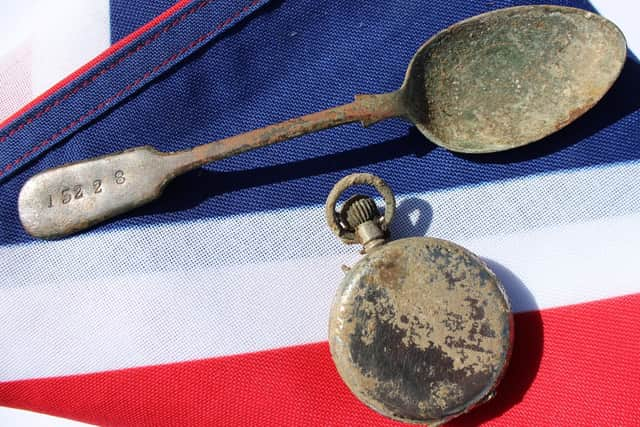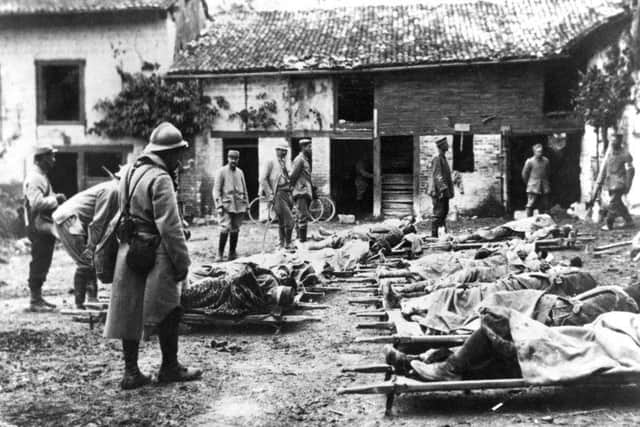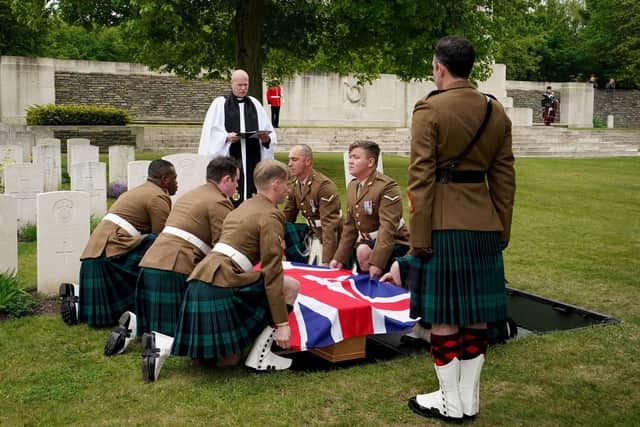WW1 soldier laid to rest after remains were identified by his watch and spoon
and live on Freeview channel 276
One of the men could not be formally identified despite exhaustive research into the First World War records of the East Yorkshire Regiment.
However, MoD investigators were able to name the other victim as Private William Johnston, 39, of the 7th Battalion of the Royal Scots Fusiliers whose spoon, found nearby, had his official Army number on it.
Advertisement
Hide AdAdvertisement
Hide AdDNA samples were taken from Pte Johnston’s great-great-niece Sharon Williamson to conclude the match and she now hopes more un-named soldiers can be formally identified using modern scientific techniques.


Ms Williamson, 48, who lives in Co Armagh, said: “It really brings ‘Lest we forget’ right into people’s faces, and that over a 100 years ago that these men are not forgotten about and they’re given the respect and the military burial that they deserve. It really brings home that these people can never be forgotten.
“Every Remembrance Day his name was called out, so we knew of the name but we didn’t know of the story.
“We didn’t know where he died, we didn’t know when he died, we didn’t know what age he was. So it’s really when you start to look at your family tree, that these things start to come up. And that’s when the story started to come alive.”
Advertisement
Hide AdAdvertisement
Hide AdShe added: “There’s so many more out there and we hope that families like us will be able to put a name to them, and have the same ceremony that we have had today.


The service in France was led by the Reverend Dave Jeal, chaplain to the Royal Highland Fusiliers and bearer parties were provided by the Scots soldiers and members of the Yorkshire Regiment.
The two soldiers were killed on September 26, 1915, during the largest British attack of the year, and their remains were not discovered until 2018.
Pte Johnston’s remains were discovered during a routine survey of the site in Lens for leftover shells and bombs when a new hospital was being built. The Battle of Loos, from September 25 to October 8 1915, was the biggest British attack of the year, and the front line ran through the hospital site.
Advertisement
Hide AdAdvertisement
Hide AdHowever, the identify of Pte Johnston’s fellow soldier remains a mystery.


He was found wearing two East Yorkshire Regiment shoulder titles and regimental war diaries confirm that on September 26, 1915, they were in the location where his remains were recovered and suffered heavy casualties.
The regiment lost 15 officers and 266 other ranks, making it impossible for the war detectives to identify the soldier by name.
The Loos British Cemetery was begun by the Canadian Corps in July 1917 for casualties from the Battle of Hill 70. The remainder of the cemetery was formed after the Armistice.
Advertisement
Hide AdAdvertisement
Hide AdNicola Nash, of the Ministry of Defence’s Joint Casualty and Compassionate Centre, said: “We were lucky with Private Johnston because he was actually discovered with a spoon that had his service number on it.
“Looking through historical documents, it also confirmed that the regiment was in the area when he was killed.”
Records showed he was the only casualty who did not have a known burial place.
Comment Guidelines
National World encourages reader discussion on our stories. User feedback, insights and back-and-forth exchanges add a rich layer of context to reporting. Please review our Community Guidelines before commenting.